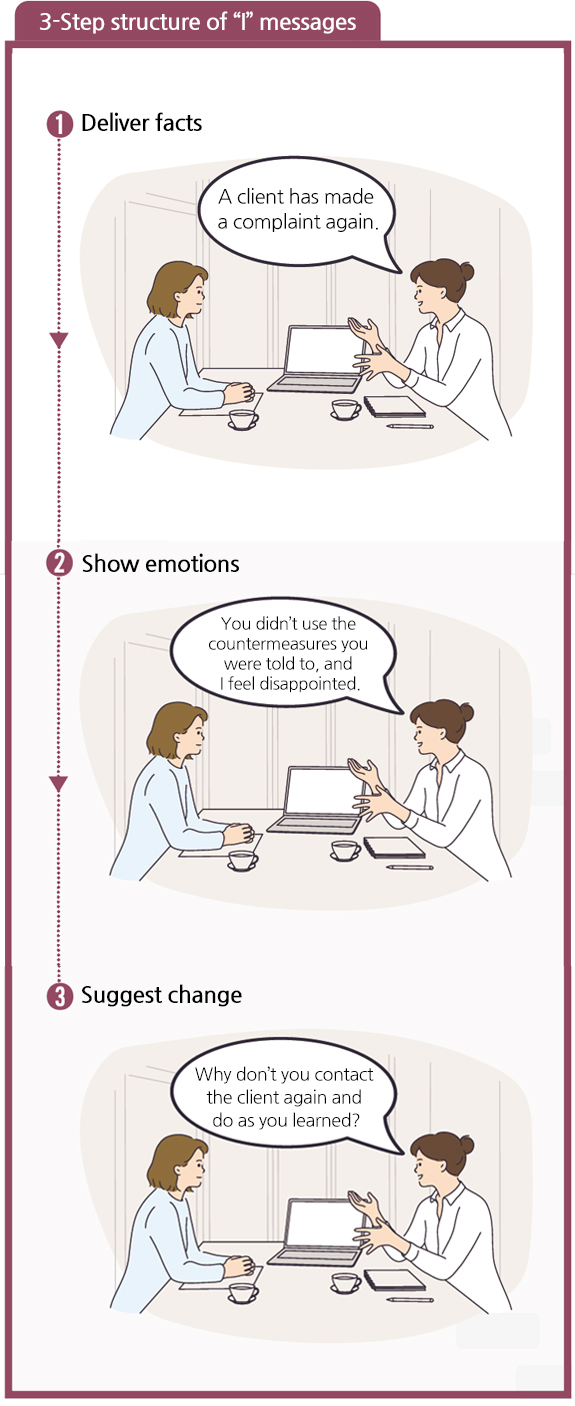“I” Message Moves the Listener
Depending on whether the subject is “I” or “the listener” in a conversation, the feeling is completely different.
When the feeling is different, the response is different. If you want the listener to understand the problem and change,
do not use accusation or criticism and change the subject to “I” instead of “You.”
The “I” message will change the person.
When the feeling is different, the response is different. If you want the listener to understand the problem and change,
do not use accusation or criticism and change the subject to “I” instead of “You.”
The “I” message will change the person.

Have you been talking with "You" messages?
“You're late again?” “Why is your report so late?“ “This is how you handle your work?” How would you feel when you hear these things from another person? Even if you were really late, your report was late, and your work wasn’t done well, your feelings are still hurt. Because all these things try to say, “You really have a problem.”
So why do people say these things? The answer is easy. They want you not to be late, report things quickly, and do your job properly. In other words, they want the listener’s behaviors to change. However, the “You” messages that criticize or scold the listener do not make any changes regardless of the facts, or only forces changes. Your body changes and so does your mind, but this kind of criticism only hurts you.
What changes when you talk in “I” messages!
So when you really want to bring about changes in the listener with the same facts, you need to use “I” messages that helps the listener to face the facts without being hurt and understand the problem properly. An “I” message is a style of communication that earnestly delivers the emotions of the speaker by using “I” as the subject in the order of “delivering the facts ▶ showing emotions ▶ and suggesting changes.”
Delivering objective facts and your feelings calmly in negative situations can bring out changes through smooth communication without hurting the listener. Of course, using “I” messages may not result in immediate changes. However, if you make talking in this style your habit, you will be able to see the people around you trying to change, even if it may be slow.

GLOVIS CS cartoon
This cartoon introduces the influence of “I” messages. Think about a good way of talking that should be in the balloon.


2021.11.01

